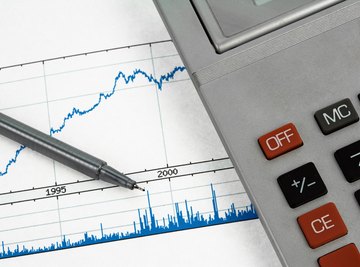
SPSS is a great statistical analysis tool that can perform a number of tests. The chi-square test is used to determine how two variables interact and if the association between the two variables is statistically significant. Basically, it determines whether or not the degree of association between the two variables is greater than what would be expected from chance alone. Therefore, if a relationship is calculated to be significant, then it is caused by something other than mere random chance.
Testing Statistical Significance Using Chi-Square
- SPSS Program
- Computer
- Data set
Make sure your data set is in a compatible format; for example, use a .xls or .spss document type. If not, convert your data set in order to be able to open the document in SPSS.
Launch SPSS and click on File, then Open Data, and import the data set that you want to analyze. If you have never opened up the data in SPSS, choose an identifiable name for your data set so it is easy to find for later testing.
Click Analyze on the top menu, then Descriptive Statistics on the drop-down menu, and Crosstabs on the menu after that. You see a Crosstabs dialogue box before you.
Look at the left-hand side of the box where there is a list of all the variables that are available for analysis in your data set. Determine which variable is the independent variable and assign it as the column value. Assign the dependent variable as the column value. You can have the categories in descending or descending order; make sure the selected order makes sense based on how the data set was gathered.
Click the button that says “Statistics,” located on the right side of the dialogue box. A “Statistics” dialogue box will open. Choose “Chi-Square” and click Continue. The result of your chi-square analysis will be displayed in the SPSS statistics viewer window under the Crosstabs title.
Look under the a list of assorted Chi-Square Tests table. Pay attention to the first value, the Pearson Chi-Square statistic. The column “Asym. Sig.” notes the probability of getting this sort of result on the basis of chance variation.
Write down the “Asym. Sign” number for the Pearson Chi-square. If your “Asym. Sig.” number is less than 0.05, the relationship between the two variables in your data set is statistically significant. If the number is greater than 0.05, the relationship is not statistically significant. For example, if your value is .003, then we can be confident that the relationship between the two variables is significant and not as result of random chance.
Things You'll Need
Tips
References
Tips
- Make sure your data set is in a compatible format; for example, use a .xls or .spss document type. If not, convert your data set in order to be able to open the document in SPSS.
About the Author
Patricia Grant is a freelance writer based out of Vancouver, Canada. She started writing professionally in 2011 and her writing interests range from education and health to e-commerce, the industry in which she works. Grant holds a Bachelor of Arts in history and politics from University of British Columbia and is currently pursuing her Juris Doctor degree at UBC.
Photo Credits
Jupiterimages/Photos.com/Getty Images
